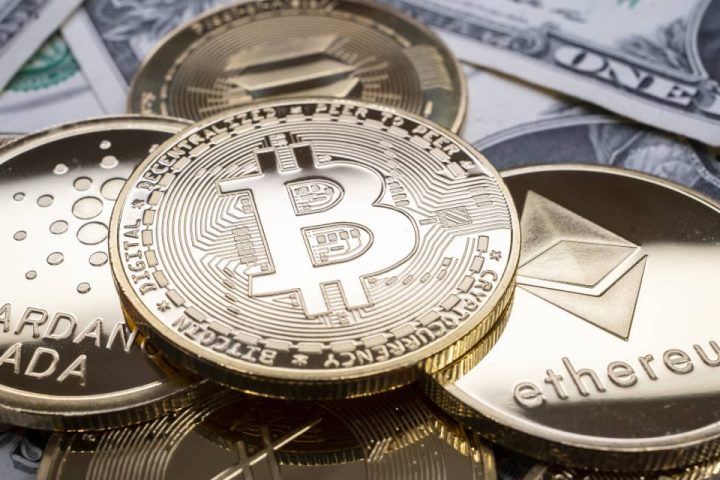Just as consumers’ expectations for inflation are moving higher, Wall Street firms are now preparing for the likelihood that Tuesday’s consumer price index for October will reflect underlying problems for the Federal Reserve.
The reason is that core readings, which kick out volatile food and energy prices to present a purer read on inflation trends, aren’t expected to have budged. Barclays
BARC,
BNP Paribas
BNP,
and BofA Securities
BAC,
are forecasting a year-over-year core inflation rate of 4.2% as of last month — a touch above economists’ estimates — after factoring in a monthly reading that either stayed at 0.3% or nudged up to 0.4%.
What’s more, the slimmer gauge known as supercore inflation, a measure of services that excludes energy and housing, is expected to land well above the Fed’s 2% target again. This all comes just after Fed Chairman Jerome Powell has expressed wariness over “head fakes” from inflation, and last week’s University of Michigan surveys of consumers found both year-ahead and long-run inflation expectations heading noticeably higher.
Read: What Is Supercore Inflation? It’s the Fed’s new favorite inflation gauge, so what exactly is it and why is it important?
Tuesday’s release still has the potential to offer some comfort to investors because of an anticipated drop in the CPI report’s headline figures. However, the big-picture worry is that measures least sensitive to volatility are solidifying above the Fed’s 2% target and inflation expectations could come unanchored the longer that this goes on.
“The market has, from what we’ve seen in the past, looked at inflation’s downward trajectory as a whole and assumed that the Fed is done with rate hikes. And if we see a continued downward trajectory [in headline figures], the market is going to price that in,” said Lauren Henderson, an economist at Stifel, Nicolaus & Co. in Chicago.
“But I think the supercore, or core services excluding shelter, is going to be of importance,” she said via phone. It came in at 3.6% last time, based on data from Haver Analytics and derived from the Bureau of Labor Statistics, “and we think it’s going to stay somewhat elevated at around 3.5% to 3.6%. Because we’ve had so many volatile components in inflation measures since the pandemic, this measures inflation in a more detailed way and acts as a proxy for the wage-price spiral that Fed officials so greatly fear.”
With price gains taking a long time to fall back to the Fed’s 2% target, investors and analysts have been counting on a slowdown in the U.S. economy to cure the inflation problem. Now, however, some are considering another possibility: the potential for a more stagflation-lite environment, in which inflation remains sticky even if demand falls because price gains are baked into long-term items like wage contracts.
Indeed, the latest University of Michigan consumer survey shows just how difficult the path ahead could be for policymakers and financial markets. Year-ahead inflation expectations moved up to 4.4%, “indicating that the large increase between September’s 3.2% reading and October’s 4.2% reading was no fluke,” the university said. And long-run expectations rose to 3.2% in November from 3% last month, the highest reading since 2011.
Henderson said there’s a “risk is that inflation expectations, which have been pretty rangebound, could continue to rise as inflation remains well above 2% — and that could add further complications for the Fed.”
“We think the Fed is close to the peak, but that there’s still further price pressures in the economy that will make the Fed have to hike at least one more time or keep rates elevated for longer than the market is expecting,” she said.
Higher inflation expectations on their own would likely be enough for the Fed to hike rates again without hesitation, a team at Barclays wrote in a note on Saturday, citing comments made by Fed Vice Chair Philip Jefferson last week. Jefferson said that in some cases, the cost of the Fed doing too little may outweigh the cost of doing too much, such as when inflation expectations are at risk of becoming unmoored.
“There’s a lot of uncertainty about where the economy is going to be in six months,” said Will Compernolle, a macro strategist for FHN Financial in New York. “Supercore is still high at above 3% and the Fed, which has been relying on long, variable lags in monetary policy to make an impact, has been as surprised as anyone else. I don’t think stagflation is particularly likely, but if we do see [an economic] downturn, that will probably bring inflation down to 2.5% and require the current level of restrictiveness in rates, at 5.25%-5.5%, to become even more restrictive.”
On Monday, Treasury yields finished little changed ahead of Tuesday’s CPI report for October, while U.S. stocks
DJIA
SPX
COMP
closed mixed. Traders of derivatives-like instruments known as fixings now expect to see a total of four CPI reports, including October’s, that produce annual headline inflation readings of above 3%.
Read the full article here







